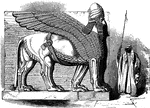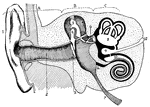
Human Ear
A diagram of the human ear. It is divided into the outer ear - A, middle ear - B, and inner ear - C.…
Nerve Ganglia (Spinal)
Nerve Ganglia, or Knots (sing. Ganglion; Knot) occur as collections of nerve cells on the course of…

Clermont Gargoyle
This illustration shows a Clermont Gargoyle in France. Gargoyles, in Gothic architecture, are spouts…

Paris Gargoyle
This illustration shows a Paris Gargoyle in France. Gargoyles, in Gothic architecture, are spouts projecting…

Lincoln Gargoyle
This illustration shows a Lincoln Gargoyle. Gargoyles (featured primarily in in Gothic architecture)…

First Stage in Glue Manufacturing
This illustration shows the first stage in the manufacturing of glue. The material used for making the…
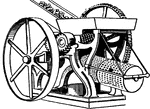
Cross Mill and Sieves (Glue)
This illustration shows a cross mill and the sieves used to crush and filter bones in glue manufacturing.

Wash Box for Removing Lime
This illustration shows a wash box used for removing lime from materials used in glue manufacturing.

Great Kangaroo
The Great Kangaroo, or 'boomer', or 'old man' (Macropus giganteus), attains a height of about five feet…

Section of Human Kidney
This illustration shows a section of a human kidney (A, Cortical substance; B, Pyramids; C, Hilum; D,…

Section of the Knee
This illustration shows a section on the knee (A, Femur; B, Tibia; C, Patella; D, Synovial sac; E, bursæ).…
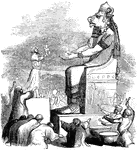
Moloch Being Worshipped
Moloch (or Mo'lech) is the name of an ancient deity which was worshipped by the Ammonites. The Israelites…

Human Leg (Front View), and Comparative Diagrams showing Modifications of the Leg
This illustration shows a human leg (front view), and comparative diagrams showing modifications of…
Human Leg (Front View)
This illustration shows a front view of a human leg. P. Pelvis, FE. Femur, TI. Tibia, FI. Fibula, TA.…

Human Leg (Side View)
This illustration shows a side view of a human leg. P. Pelvis, FE. Femur, TI. Tibia, FI. Fibula, TA.…

Astarte
Ashtaroth, or Astarte, was among the idols of Syria; this medal shows she was worshiped in Jerusalem.…

Coin of Hostilianus
A coin of Hostilianus, with a figure standing with a blunt spear in his right hand and a human head…

Saint Matthew Writing
Saint Matthew sitting an a cloth-covered table writing the Gospel. The Holy Spirit, represented as a…

Jonathan Mourned
"And Tryphon made ready all his horsemen to come that night: but there fell a very great snow, and he…
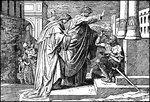
Peter Heals a Lame Beggar at the Temple
"But Peter said, Silver and gold have I none; but what I have, that give I thee. In the name of Jesus…
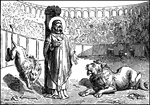
Ignatius of Antioch is Martyred by Being Fed to Lions
Illustration of Ignatius of Antioch, also called Ignatius Theophorus, tied to a post by his neck and…

Bones of the Shoulder and Upper Extremity - Front View
"A, acromion; C, coracoid; CA, carpus; CL, clavicle; H, humerus; M, metacarpals; O, ventral surface…
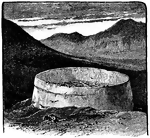
Tower of Silence Built by the Parsees
"A tower, generally built about 25 feet high, on which the Parsees expose the bodies of their dead to…

Armadillo - Endoskeleton and Exoskeleton or Dermoskeleton
An illustration of a pichiciago, a small burrowing armadillo. The front half of the animal is covered…

Hand Sled or Sledge
"1. A drag or dray without wheels, but mounted on runners, for the conveyance of loads over frozen snow…

The Skull of a Paddle-Fish with the Beak Removed
"Skull of Spatularia, with the long beak removed, the anterior (asc) and posterior (psc) semicircular…

Speaking Trumpet
"A trumpet-shaped instrument by which the sound of the human voice is reinforced so that it may be heard…
Human Spermatozoa
"One of the numberless microscopic bodies contained in semen, to which the seminal fluid owes its vitality,…

Spirometer
"A contrivance for measuring the extreme differential capacity of the human lungs. The instrument most…

Peter Heals a Lame Beggar
"But Peter said, Silver and gold have I none; but what I have, that give I thee. In the name of Jesus…
